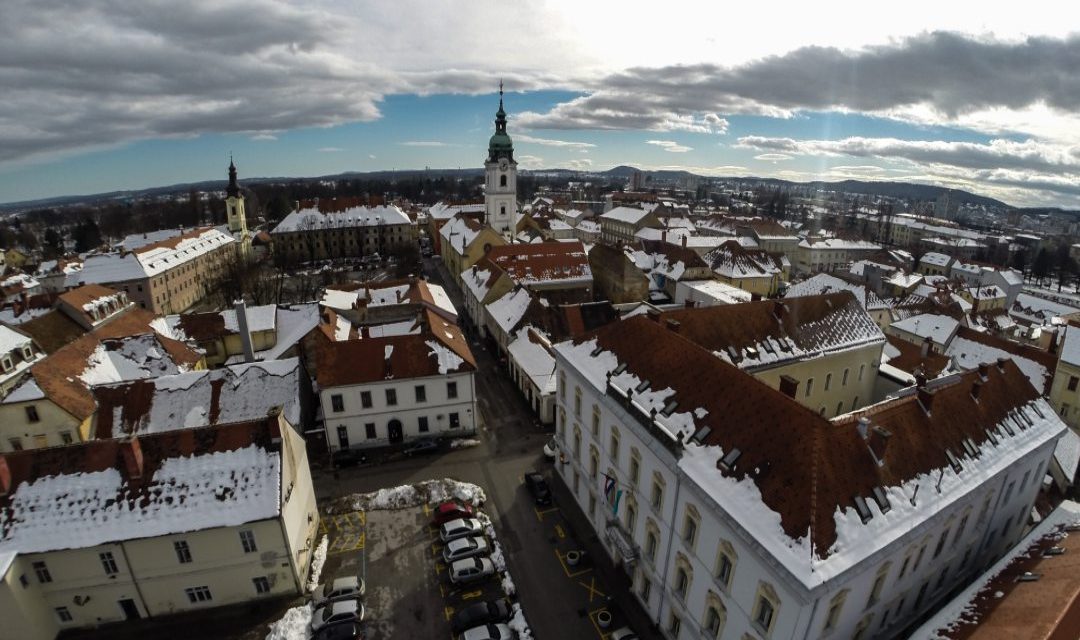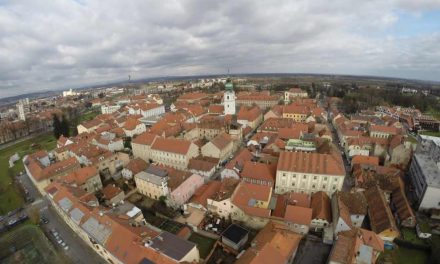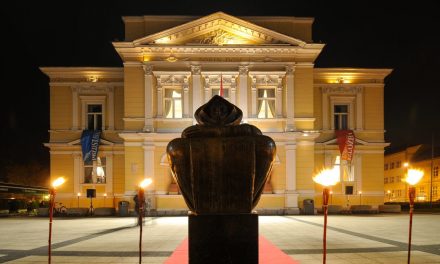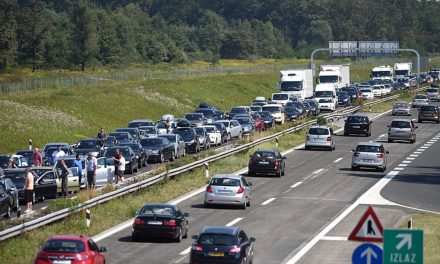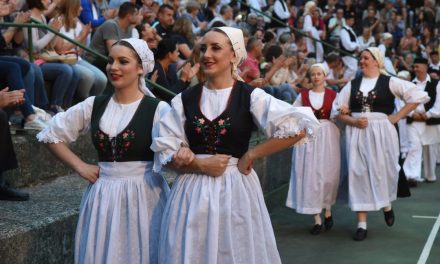Modruš at its pinnacle of power
Parish Modruš has been mentioned since 1163. It became the centre of the diocese in 1460, at the height of ecclesiastical, cultural and political power. In 1486, Bernardin Frankopan issued the Modruš Feudal Law, one of the most important historical documents in Croatia in the Glagolitic script. As assumed by some historians, the first Croatian and South Slavic incunabula Missal was printed in Modruš in 1483.
The noble municipality of Draganić
Draganić is one of the Croatian municipalities whose residents during the Middle Ages were serfs not subjected to the nobility. Free noble municipalities Draganić (“nobiles de Draganich”) enjoyed rights and freedoms according to the Charter of the Hungarian-Croatian issued by King Bela IV in 1264, for the merits of its residents in the war against the Mongols in 1242. This privilege in some way links Draganić with Turopolje.
A decision on the fate of Croatia
Upon the death of Louis II Jagiellonian in 1526 in the battle between Croatian-Hungarian and Ottoman army on Mohač field, Croatia was left without a ruler. At the election held in the Parliament of Croatian nobility in Cetina 1st January 1527, King Ferdinand I of Hapsburg became the King of Croatia. The fate of Croatian was heavily tied to that of Austria during the next four centuries, up until 1918.
Defence without canons
The fortress in Karlovac was built in 1579 and during that same summer, it was equipment with guns and ammunition. But the first cannon arrived only a year and a half later. By order of the founder of Karlovac, Archduke Charles II of Habsburg, they were brought from Zagreb in 1581. Fortunately, the Turkish army did not know that and subsequently this delay did not endanger the town’s defences.
Unconquerable fortress
The Karlovac fortress justified its construction; the Turkish army did not even try to conquer it because of its defensive power, despite the frequent conflicts in the region (from 1592 to 1672). The Karlovac military were notable in other battles with the Turks, especially their cavalry (arkebuziri) led by General Andrew Auersperg in the victory at Sisak in 1593. Here, for the first time since the battle of Krbava in 1493, military balance was restored on the Croatian-Turkish border.
The most famous Karlovac wedding
The wedding of 16-year old Ana Katarina Frankopan and 21-year old Petar Zrinski in 1641 was the most famous wedding in the history of Karlovac and Ozalj. The event led to a close alliance amongst the most prominent Croatian noble families. Only 30 years later, with the collapse of the conspiracy Zrinski and Frankopan against the authorities in Vienna will lead to their extermination and extinction.
A vow to be rescue from the plague
The greatest plague devastated Karlovac in 1691 (the last plague happened in 1733). Most people were able to avoid it, including all the senior officers except Vuk Mihačević. When the danger had passed, the Karlovac inhabitants fulfilled a vow to the Blessed Virgin Mary by raising a statue of the Virgin Mary on the central square (now the Ban Jelacic Square) as a thanksgiving for the end of the affliction and healing – first public city monument. They also built the Church of the Blessed Virgin Mary of Snow beneath Dubovac fort.
Water up to their necks
The greatest flood Karlovac has experienced was in the spring of 1775. The Karlovac rivers had burst from their tributaries and penetrated the walls into the city. For a period of six days Karlovac inhabitants lived on the floors and in the attics of houses. The last time the city was flooded was in 1966. After that, a (17 km long) dam was built along the Kupa and Korana Rivers, and in 1984 a (22 km long) release channel Kupa – Kupa was dug.
A privileged town
During French rule from 1809 to 1813, Karlovac was a municipality with the mayor – maire appointed by French Emperor Napoleon. In Croatia, only Zadar and Dubrovnik had this privilege. At that time, Karlovac municipality had a population of 7,630 and it was therefore the third largest in the Croatian part of the Illyrian Province, behind Rovinj and Rijeka.
Advanced Karlovac Illyrians
The most important documents of the Illyrian movement were printed in Karlovac. There in 1838, the Illyrian Reading Society was established, only the second reading society in Croatia (after Varaždin). In 1839, the Illyrians from Zagreb and Karlovac were the first in Croatia to strive in building an Illyrian theatre in Zagreb (future Croatian National Theatre). Next to the Zagreb inhabitants, they were the second most numerous founders of Matrix Illyrian in 1842.
Most patriotic and most cultured
During the Croatian National Revival (Illyrian Movement), and besides Zagreb, Karlovac was ‘the most patriot and cultured’ city in Croatia. It enjoyed a second ‘Golden Age’ of trade. In 1847 and at the initiative of llyrians, Karlovac introduced – without permission from Vienna – the Croatian language in public life. Followed by other cities during the same year, Croatian became the official language in Croatia.
Zagreb inhabitants ‘extinguished’ Karlovac
One of the biggest fires that afflicted Karlovac was in 1863. From the mill on the Korana River, it spread to houses in the neighbourhood of Rakovac. Karlovac inhabitants feared that the fire would destroy the entire village. The fire engulfed the houses over a period of three days, and was finally extinguished only with the help of fire-fighters who had arrived from Zagreb. Property valued to 200,000 florins, which was at that time was a lot of money, was turned into ash.
A rebellion for a free Croatia
In 1871, Eugene Kvaternik instigated the Rakovica revolt against the Austro-Hungarian authorities. The rebel Interim National Croatian Government demanded the demilitarisation of the Vojna Krajina (Military Border) and its annexation to independent Croatia, the introduction of counties, municipal government, equality before the law and respect for religion. The fourth day revolt was suppressed, and the leaders executed. In 1933, a monument was raised in the centre of Rakovica in memory of the leader of the uprising.
Champion in walking
At the age of 27, the Karlovac world traveller and researcher, Mirko Seljan, won the prestigious title of Champion of Globetrotter (champion in walking). He got this recognition on account of his extraordinary accomplishment. In 1898, he walked 2,800 kilometres from St. Petersburg to Paris in just 100 days. Throughout Europe and Croatia, he held a series of lectures on his journey, and people always sought more tickets for his talks.
Sticks for the whole world
When walking sticks came into fashion in the late 19th century, Karlovac had become one of the most important manufacturers in the world of ‘Congo’ sticks or the bars. In the city, several stick factories was opened. The most important was the property of Bartol Polić, founded in 1888, whose plants were in Dubovac. It annually produced up to 600 000 sticks, of which four fifths were exported to America. The Karlovac ‘Congo’ sticks were much appreciated, were made of shoots of chestnut trees, which abound in the area. Demand for them has ceased early in the First World War.
Courage that had resounded
On 17th November 1941, 24 partisans led by Vjećeslav Holjevac entered Karlovac, a town with thousands of enemy troops, wanting to free a wounded friend. They were seen when leaving, but escaped after the battle on the Korana Bridge. The film Signals over the City was made in 1960 based on the event, which was most watched long feature film in Karlovac.
A giant from Male Švarče
Jugoturbina, the largest company ever in Karlovac and one of the largest in Yugoslavia, was established in 1949. It started operating as a turbine factory in a former mill, and then in the textile factory, on the Korana River in Rakovec. In 1953, the Factory was relocated to new facilities in Mala Švarča, and and next year renamed Jugoturbina. In the mid-1980s, it had almost 10,000 workers (one fifth of the Karlovac population at the time), achieving almost half of urban income. Upon transformation and privatization of the Croatian economy from 1990 to 1992 it was liquidated, and some companies continued to work independently (the best one being Alstom Croatia).
A world record holding athlete
Jelica Pavličić Štefančić is the only Croatian world record holding athlete. In 1974, in Sofia she ran 400 meters in 50.98 seconds. Born in Slunj and finishing high school in Karlovac, she was the most successful athlete in the history of Croatia, and was declared in 2000 the best Karlovac athlete of all time. Today, after 36 years, she holds the Croatian record for the 200 meters (23.14) and informal (measured manually) record for the 100m (11.1). In the 1970s, she was multiple champion of Croatia and Yugoslavia in the sprint events. She won medals at the European Championships and other major athletic competitions.

